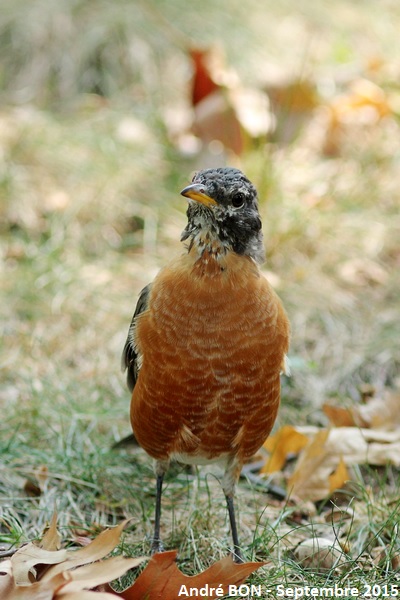

| American Robin (Turdus migratorius (Linnaeus, 1766)) |


|
|
Scientific name: Turdus migratorius (Linnaeus, 1766) Common name: American Robin French name: Merle d'Amérique Order: Passeriformes Family: Turdidae Size: Body size: 23 to 28 cm; Weight: 77 to 94 g; Wingspan: 31 to 40 cm. Habitat: Forests, woodlands, parks and gardens, cultivated areas with hedgerows. Food: Mainly fruits but also insects and worms picked on the ground. Nesting: The nest is made using mud, grass, twigs and roots. It is often built in a fork of a tree or on other various supports in urbanized areas. There may be 2 to 3 clutches per season (April to late August, 3 to 5 eggs per clutch). Migration: Northern populations move to southern Mexico and Guatemala in winter. Populations of the south of the United States are sedentary. Geographic area: North America: Canada, United States. |
American robins have a blackish head with a white eye ring. The throat is striated with black and white. The upper parts are greyish brown. The underside is russet orange with some white colour on the anal part. The legs are brown and the bill is yellow. Females are slightly duller than males. Juveniles show heavily black speckled underparts and flanks. |
| [To know more about the American Robin] [Next picture] [Top] |

|
American Robins come begging for food from visitors to Central Park. |
| [To know more about the American Robin] [Previous picture] [Top] |

|
The black speckled underparts indicate one juvenile. |